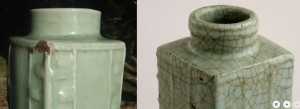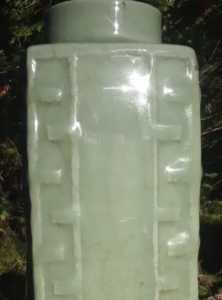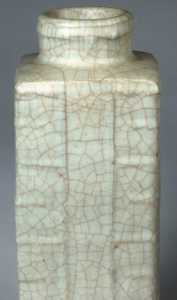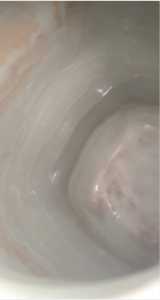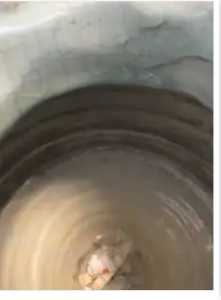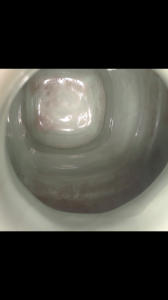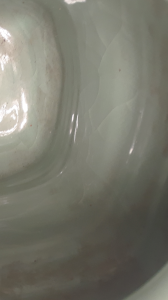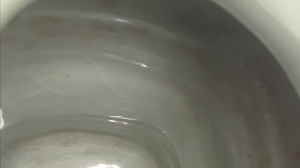The Chinese and Asian Art Forum. For Fans, Collectors and Dealers.
 Basic Rules For the BidAmount Asian Art Forum: Talk about whatever you want. You can even discuss and offer things that are for sale if they are authentic. Maximum image file size per post is 2 MB. Images of 700pxl x 700pxl are optimal if saved at a medium resolution. Be respectful of others and enjoy yourself. Click the YouTube link for a brief tutorial on using the forum. You can also EMBED Videos by cutting and pasting from You-Tube, Vimeo etc.
Basic Rules For the BidAmount Asian Art Forum: Talk about whatever you want. You can even discuss and offer things that are for sale if they are authentic. Maximum image file size per post is 2 MB. Images of 700pxl x 700pxl are optimal if saved at a medium resolution. Be respectful of others and enjoy yourself. Click the YouTube link for a brief tutorial on using the forum. You can also EMBED Videos by cutting and pasting from You-Tube, Vimeo etc.
NOTE: To post an item or add a new post, click open the category title from the FORUM LIST, and CLICK the Blue ADD TOPIC button.
It’s like posting a pair of shoes and asking how tall I am. Guesswork
I wouldn’t even send to Peter or send pics to Christies or Sotheby’s,I’d take it in as as it needs to be handled .
Vic
It’s like posting a pair of shoes and asking how tall I am. Guesswork
It is guesswork, but the quiz is valid in it's premiss, because it points out the fallacy that there is anyone (anywhere) that could simply look at the celadon glaze and make claims to it be a good example of Ming (or any period for that matter) when other contributing factors say otherwise (or are completely absent).
I wouldn’t even send to Peter or send pics to Christies or Sotheby’s,I’d take it in as as it needs to be handled .
I disagree. I couldn't disagree more.
Send pics of the entire piece to Christie's, Sotheby's, etc. Their initial judgement will be on the overall composition of the vase, whcih does not require handling. If the composition (design, quality of rendering, foot, glaze, defects) are within the normal parameters of a genuine piece, you'll get an estimate that is contingent on physical inspection.
Going in without an appointment is time consuming for the representatives... it's also a bit rude.
If you call and schedule an appointment, unless they really know you, they're going to ask you to send photos first anyhow.
Jessee, look.... I really hate being the contrarian, despite some strongly worded posts where I felt it was important. Your post is one of them, unfortunately for you.
However, this kind of encouragement to send you to make an in-person visit to a major auction house seems like a prank to have you humiliated in a very public manner.
From your posts, I think you really want to learn the truth about what you have, or don't have. So, please understand.... despite suggestions otherwise, collecting Chinese porcelains is not a sport like horseshoes.... getting close to looking like a genuine piece IS NOT the threshold for authentication.
Perhaps since there are several folks that support your vase as a Ming cong looking into the matter, they'll find a more convincing example of a known vase that exhibits the same design, color glaze, foot, rough rending, and who knows... maybe even a big tilt, too!
But so far, your advocates have only provided very circumstantial evidence that a tilted vase could exist from the Ming, and have yet to find a good match in design or quality of rendering.
Take your time on this one... get your facts together, first. Then, call a major auction house with everything available to make a good assessment... otherwise, they won't take you seriously.
@greeno107 I used this to show that the rib boarder did exist at the time. You can’t compare one kiln example to the other there are thousands of Longquan examples and all have different variations environment and kiln temperatures can totally change the outcome. First I think the notion that a faker purposely knocked over a piece to trick us to believe it’s old is just impractical. Another fact that the faker coiled the pot during construction which is a long process just to tip it over for what you mentioned no serious collectors would be interested. I would be interested in seeing a modern Longquan glaze that has been mastered. The forger would have had to soaked the vase to make the dirty crackle appear that would have added another step in the process to stop it perfectly on the inside that’s one more process for a collector to not be interested just makes zero sense. And they added all the individual scratches I see on the closeups one more step to add add the burn foot and the oxidized sides two more steps. That’s a lot of extra steps to purposefully damage the piece to not be able to sell it for much. But what does make sense is it takes a lot of work to make a piece like this back during wood kiln times and I have read a lot that things were salvaged the Buddhist salvaged everything. I don’t think anyone can say without a doubt until it’s been handled by a expert.
It is the offset side bits that are unusual and this BM one, doesn't have that.
@lotusblack Here are the two vases, subject vase and BM vase. I’m not at home, so no fancy photo shopping- sorry.
I used this to show that the rib boarder did exist at the time.
The ‘ribs’ not only look different, but as I recall, your entire argument up until now had rested on the glaze looking ‘good’ for Ming.
But, if you’ve changed your position, that’s fine. However, despite both vases being of similar size, the ‘rib’ design is far from similar.
You can’t compare one kiln example to the other there are thousands of Longquan examples and all have different variations environment and kiln temperatures can totally change the outcome.
Well, a quick Wikipedia check, as well as Gotheborg.com, and some other articles…. There were not ‘thousands’ of Longquan kilns… 500 have so far been discovered. spanning a roughly 600 year period. They were not all operating at one time, and towards the later years as blue and white became popular, it is reasonable to conclude that by the Ming, only a few dozen were operating.
Another fact that the faker coiled the pot during construction which is a long process just to tip it over for what you mentioned no serious collectors would be interested.
I have found no indication that ‘coiling’ was a method of constructing Ming longquan wares, and I think it’s unlikely a method used for a square cong form. I’m not sure I see indications of ‘coiling’ or not in the subject vase…. What’s your source?
- The forger would have had to soaked the vase to make the dirty crackle appear that would have added another step in the process to stop it perfectly on the inside that’s one more process for a collector to not be interested just makes zero sense. And they added all the individual scratches I see on the closeups one more step to add add the burn foot and the oxidized sides two more steps. That’s a lot of extra steps to purposefully damage the piece to not be able to sell it for much.
Forgers go to these steps and beyond all the time, including making fake labels, putting in ‘old’ Japanese boxes, and faking photographs… Have you looked on Ebay? Nothing about these activities are beyond normal activity of your every day forger.
Suggesting that it would be time wasted to fake these traits, especially the collapsed foot, when here you are defending the authenticity of this vase is proof in itself that such measures will convince some that an object could be authentic.
I don’t think anyone can say without a doubt until it’s been handled by a expert.
This seems to be complete reversal of your earlier statements about the glaze looking ‘good’, ‘ribs’ appearing in the Ming, and other things observations you've made based on photos.
In fact, if that were true, then why have this forum? All we have to offer is done visually through photos.
The mastery of celadon glaze is well documented… for this reason, I think photos alone are not enough to confirm authenticity of the glaze. However, most of the other physical factors used in assessing age/authenticity can be judged through photos, and this vase falls short.
The appearance of imperfect vases should have been just as prevalent in the early 20th c, as it is today, if this is just a matter of genuine pieces with defects coming into the market.
But, defective pieces are not well documented in early research. Why?
The explanation requires no serious study - these defects are modern creations made to lure the hopeful into believing they’ve discovered a genuine period piece that was overlooked by early collectors.
This deception plays strongly into the psychology of collectors - Freud and others wrote extensively on the behavior of ‘collecting’. I’ve only recently read a few articles…. Fascinating stuff.
Greeno, I’ll stick to my opinion that a piece like this has potential to be Ming Longquan and should be handled by an expert for a definitive opinion.
Vic
Actually Mark a Cong is moulded rather than thrown and would be slab built and luted in the corners.There may be additional work to the interior prior to the circular base and top being attached.
From the side on image of the foot it looks to have caved in as the side wall buckled outwards in the firing,leading to the exaggerated angle.
Who knows I may be totally wrong but I can’t help liking the piece.
Vic
It looks like nobody wanted to take the ‘glaze’ challenge except for Jesse.
The top left image was a period example from the MET. The remaining 3 images are all from Ebay.
For the record, most of the Ebay longquan examples were so poorly done that I didn’t think their glazes would be at all convincing.
But, the Ebay pieces I captured images of were being offered for under $300, and the pooling of the glaze on these examples are visually identical to photos of Museum examples.
The differences between the fakes and the period examples only become apparent when comparing the overall designs and quality of rendering.
BTW, I would have bought it for $45, too, but not with the belief that it was old - it is a great example of how recent tactics to sell forgeries are coming into the market.
In the later part of the 20th c, forgers worked hard to make as accurate a copy as possible, but they failed to disguise the ‘newness’ of their work.
Now, ‘imperfection’ has become a fantastic diversion to their failures to achieve the quality expected in period pieces.
It’s all very fascinating to me.
Thanks for visiting "The BidAmount Asian Art Forum | Chinese Art"
If you sell on eBay, or have a shop feel free to post images and descriptions and links.
Check back often for discussion about the latest news in the Chinese art and antique world. Also find out about the latest Asian art auctions at Sotheby's, Christie's, Bonhams and Tajans.
Auction results for: fine porcelain, ceramics, bronze, jade, textiles and scholar's objects. As well as Japanese, Thai, Vietnamese and other Asian cultures.
Thank you,
Peter Combs
Topics and categories on The BidAmount Asian Art Forum | Chinese Art
Kangxi vases, Kangxi dishes and chargers, Kangxi ritual pieces, Kangxi scholar's objects, Qianlong famille rose, Qianlong enamels, Qianlong period paintings, Qianlong Emporer's court, Fine porcelain of the Yongzheng period. Chinese imperial art, Ming porcelain including Jiajing, Wanli, Xuande, Chenghua as well as Ming jades and bronzes.
The BidAmount Asian Art Forum | Chinese Art
A free Asian art discussion board and Asian art message board for dealers and collectors of art and antiques from China, Japan, Korea, Thailand, Cambodia, Vietnam and the rest of Asia. Linked to all of the BidAmount Asian art reference areas, with videos from plcombs Asian Art and Bidamount on YouTube. Sign up also for the weekly BidAmount newsletter and catalogs of active eBay listing of Chinese porcelain, bronze, jades, robes, and paintings.
The art of calligraphy - and for the ancient Chinese it certainly was an art - aimed to demonstrate superior control and skill using brush and ink. Calligraphy established itself as one of the major Chinese art forms during the Han dynasty (206 BCE - 220 CE), and for two millennia after, all educated men were expected to be proficient at it.
The Museum’s collections of Asian art span nearly five millennia and encompass the cultures of China, the Himalayas, India, Japan, Korea, and Southeast Asia. In 2007, the Museum launched an initiative to create dedicated galleries for the collection, beginning with a gallery for the arts of Korea ...
Chinese art is full of symbolism, in that artists typically seek to depict some aspect of a totality of which they are intuitively aware.
China Online Museum is the finest online museum of Chinese art. It features Chinese calligraphy, painting, ceramics, bronzes, carving, and other artworks.
Chinese Ceramics & Works of Art. Overview Upcoming auctions Contacts Auction results ... Christie’s sales of Chinese ceramics and works of art showcase centuries of Chinese history. Held throughout the year in London, New York, Paris and Hong Kong, they attract a wide audience of collectors and connoisseurs vying for pieces as diverse as ...
Explore Asian Art Week. Contact the Specialist Department. Chinese Paintings ... Senior Specialist, Head of Sale. [email protected]. Tel:+1 212 641 5760. Bid in-person or online for the upcoming auction:Fine Chinese Paintings on 10 September 2019 at New York. Bid in-person or online for the upcoming auction:Fine Chinese Paintings on 10 ...
Discover an abundance of must-see art from all corners of a vast continent at Christie’s NY Asian Art Week. From contemporary classical and Chinese paintings to works with exemplary provenance from the Art Institute of Chicago, our Rockefeller Paza galleries will be full of ancient treasures and contemporary masterworks in a salute to the vibrant arts of Asia.
Sold to benefit The Art Institute of Chicago’s Asian Art Acquisition Fund, the sale features 84 lots with a focus on Ming and Qing porcelains, and offers a rare insight into the taste for collecting Chinese ceramics and works of art in the Midwest from the end of the 19th century through the 1980s. Highlights include two Wanli wucai garlic-head vases, a Qianlong mark and period, blue and ...
Specialist, Chinese Paintings, Christie's London Dr Malcolm McNeill is a Specialist in Chinese Paintings at Christie’s, based in London. He previously worked as an assistant curator of the Chinese collections and the Victoria and Albert Museum in London, as a researcher at the British Museum, and as a translator and tour guide at the National Palace Museum in Taipei.
The Christie's Education 2020 Conference: The Chinese Art Market 18 Jun 2019 Christie’s Education is delighted to announce our first international academic conference in Asia which will take place in Hong Kong from 26-27 November 2020 at the Hong Kong Convention and Exhibition Centre and will run in parallel with Christie’s Hong Kong Autumn Auctions.
The summer Chinese Art sale in Hong Kong will feature works of art from several private collections, including Qing porcelains and textile from the collection of the legendary Chinese art dealer A. W. Bahr (1877–1959), fine gilt bronze Buddhist sculptures from an old Hong Kong collection, an East Asian collection of Qing dynasty wine cups and jades, and a Japanese collection of Song ceramics ...
Sotheby's Chinese Works of Art Department holds two auctions each year in London, New York, Hong Kong and Paris.
Chinese Art - View Auction details, bid, buy and collect the various artworks at Sothebys Art Auction House.
With more than 340 Chinese works of art dating from the Neolithic to the Republic periods, highlights of this sale include a selection of Qing Imperial monochromes from the collection of Arnold and Blema Steinberg, early ceramics from the Art Institute of Chicago and Chinese porcelain and works of art from the collection of Henry Arnhold.
Results: Sotheby's Asia Week achieved $52.4 million in six strong auctions, exceeding pre-sale estimates. With 76.5% of lots sold and 60.3% of lots surpassing high estimates, the Asian art sales at Sotheby's indicate continued collector interest in the finest works of art from China, India and and the Himalayas.
Today's sale of Important Chinese Art will proceed as planned with sessions at 10 AM and 2 PM EDT. Sotheby's will be monitoring the weather conditions throughout the day and will be available to coordinate alternative bidding options should conditions make it difficult for clients to attend the auction in person.
Bonhams Chinese Art department is renowned for offering the finest works of art representing the richness and breadth of China's artistic heritage, particularly Imperial porcelain, white and spinach green jades, cloisonné and Buddhist art. Specialised international auctions are held globally, including London, Hong Kong and San Francisco.
Bonhams : Chinese Works of Art We use cookies to remember choices you make on functionality and personal features to enhance your experience to our site. By continuing to use our site you consent to the use of cookies. Please refer to our privacy and cookie policies for more information.
Bonhams Fine Art Auctioneers & Valuers: auctioneers of art, pictures, collectables and motor cars. We use cookies to remember choices you make on functionality and personal features to enhance your experience to our site. By continuing to use our site you consent to the use of cookies. ... Chinese Art (US) General enquiries
Bonhams : Fine Chinese Art We use cookies to remember choices you make on functionality and personal features to enhance your experience to our site. By continuing to use our site you consent to the use of cookies. Please refer to our privacy and cookie policies for more information.
Bonhams Fine Art Auctioneers & Valuers: auctioneers of art, pictures, collectables and motor cars Bonhams : Asian Art We use cookies to remember choices you make on functionality and personal features to enhance your experience to our site.
Bonhams are international auctioneers of fine Chinese and Japanese art. We specialise in rare Imperial and Export Chinese ceramics and works of art, as well as Japanese ceramics, fine and decorative works of art from the Neolithic Period to the 20th century. View on map
Bonhams Fine Art Auctioneers & Valuers: auctioneers of art, pictures, collectables and motor cars. We use cookies to remember choices you make on functionality and personal features to enhance your experience to our site. By continuing to use our site you consent to the use of cookies. ... Asian Art Bonhams. Work. 22 Queen St.
